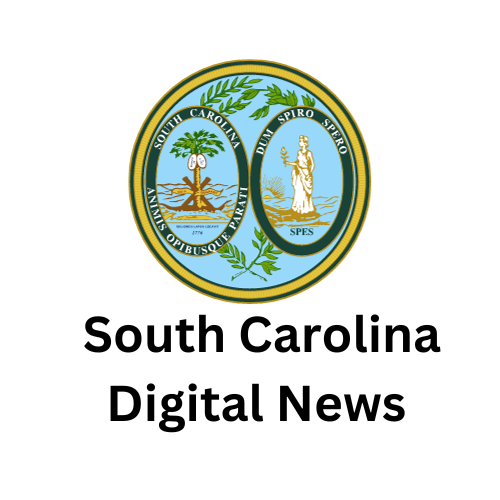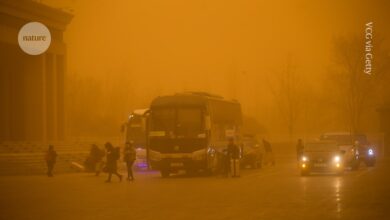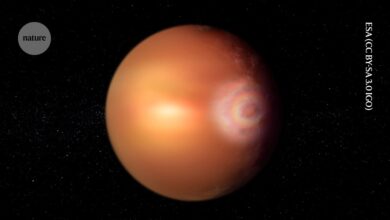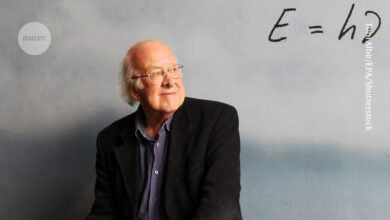
[ad_1]
Julie Gould: 00:10
Hello and welcome to Working Scientist, a Nature Careers podcast. I’m Julie Gould. This is the second episode in the series about art and science.
And in this episode we’re exploring what collaborations between artists and scientists look like, how deep artists dive into the science, and some of the challenges that collaborations like this can bring.
In keeping with our art and science theme, each episode in this podcast series concludes with a follow-up sponsored slot from the International Science Council. The ISC’s Centre for Science Futures is exploring the creative process and societal impact of science fiction by talking to some of the genre’s leading authors.
From the first episode, we heard that curiosity is what brings artists and scientists together. It’s the why that both these groups of people have that drives them to create, whether they’re creating new knowledge, or art.
David Ibbett: 01:08
Hello, my name is David Ibbett. I am an assistant professor at Berklee College of Music, and Worcester Polytechnic Institute, and I’m a composer and director of Multiverse concert series.
Julie Gould: 01:22
David, like many of the artists I’ll speak to in this series, is fascinated by science, scientific data, scientific stories, and scientific questions.
David Ibbett: 01:32
I want to know what is out there in the universe. And is there life? There’s a lot of mysteries, you know, how did the universe get here? How are we here to ask the question. It’s, it’s deep, sort of, meaning-of-life questions that, you know, we can’t we can’t go there right now. So the next best thing is to explore them, well, through science on Earth, We’re peering out trying to answer the questions. And through art, which provides the other half of that of the human condition, which is our emotional world, and the community as well. Art and music, it’s bringing people together. We, you know, it’s, we’re exploring these things together.
Julie Gould: 02:16
So how do artists and scientists explore these things together? How can they collaborate? For David and many other artists, it actually means spending time with each other, and particularly trying to understand what they’re trying to achieve. What are the questions they’re trying to answer?
Lucy Smith: 02:43
My name is Lucy Smith, and I’m a botanical artist and illustrator. Specifically, as a botanical illustrator, my job is to make illustrative artwork of plants, which kind of makes them useful and beautiful to look at, but useful in terms of science. So I’m exploring how plants are put together. And showing that in my illustrations.
Julie Gould: 03:10
I met Lucy at Kew Gardens in London, in the warmest zone of the tropical part of their Princess of Wales conservatory, right in front of the pond where the giant water lilies are grown.
Lucy has been based at Kew Gardens for more than 20 years, and so has spent a lot of time working with botanists and other scientists who are studying plants.
Lucy Smith: 03:30
The botanist will come to me and say, “I would like this illustration made of this plant. And I need it because I’m publishing this plant as a new species to science.” or “I need it for identification purposes in the flora.”
And they’ll tell me a little bit about the plant’s background. But more importantly, what makes that plant species different from another.
So they’ll ask me, “Look, can you make sure that you highlight this or that? And can you do a dissection of that flower?”
But we also feed back to the scientists say, “I’ve seen what you’ve asked me to see. But do you know what, I’ve also seen this? Did you know that, you know, this flower has this structure.”
So sometimes we’re looking at it even more closely than the scientists.
Julie Gould: 04:13
This means that over the years, she’s taught herself a lot of botany.
Lucy Smith: 04:18
I’ve watched how botanists work, how they analyze plants. And I’ve just learned to do that naturally.
Julie Gould: 04:25
And that then becomes incorporated into the way that you do your drawings?
Lucy Smith: 04:30
Yes, it’s very, very much incorporated into the way that I draw. In fact, I find it hard to draw any other way now. (Okay).
Julie Gould: 05:00
British artist Luke Jerram studied physics and maths at school and was planning to become an engineer.
But instead he decided to go to art school. But that doesn’t mean that he left science and engineering behind, because for more than 20 years now, science and engineering have been his muse.
He’s worked on pieces that are based on virology, biology, physics and engineering, astronomy, electrical engineering, the list goes on.
Luke Jerram: 05:24
So my job as an artist is to be able to learn people’s languages. And to be able to communicate in the way that they need to communicate.
So I’ve had to learn the sort of language of glassblowing, just to know what can be built and what can’t be built and the processes of that, And I’ll pick up a new language, depending on the project that I’ll be working with.
So I’m reading journals and newspaper stories, watching TV programs about science all the time. And yeah, you just immerse yourself in it really. And, and, I go into academic universities very much as a student, and with a very low level of knowledge.
Julie Gould: 06:07
This works well for Luke, he says, because scientists are used to working with students, but also, because you can start with a clean slate.
Luke Jerram: 06:15
So once you know about it, it is brilliant, but then it also allows you to, so you can kind of peer into a particular subject. And then you can look at it from a slightly different perspective as well.
Julie Gould: 06:39
It’s this different perspective that makes artists so valuable to scientists. And it’s why some scientists actually bring the artists into their laboratories.
Ljiljana Fruk: 06:50
First of all, you get to interact with somebody out of your discipline, so you are continuously challenged.
Julie Gould: 06:58
This is Ljiljana Fruk, a professor of bionanotechnology at the University of Cambridge in the UK.
She has always been a lover of art, and has always informally made it part of her work as a scientist.
But in 2022, she invited an artist into her lab to come and be their artist-in-residence.
One of the challenges of having an artist in your lab is that it sometimes requires you, the scientist, to take a step back from the details of the project you’re working on, and answer some more basic questions.
Ljiljana Fruk: 07:30
But how does this work? What is the atom? What is the molecule? So you have to kind of step out and discuss.
And the other thing is really, I had also cases that these questions and discussions that we had. And the stay, when the artists would stay in my lab, that led to another project.
So you know, like, how can we make the things greener? So also, Diana is very much into sustainability.
Diana Scarborough: 08:02
I’m Diana Scarborough. I call myself an artist engineer and educator. Really an artist who works at the intersection of art and science. So what does that mean? For me, based in Cambridge, I get the opportunity to work the leading scientists.
I collaborate with them, learning about their research and then making artwork from our relationship, by our collaboration.
Julie Gould: 08:29
Diana is the first artist in residence in Ljiljana Fruk’s laboratory. She studied electronic engineering in the UK and spent 17 years working as an engineer before turning her life and career around and studying fine art in the Netherlands.
And we’ll hear more about one of the collaborative projects that Diana and Ljiljana Fruk and her team have been working on, in another episode.
Ljiljana Fruk’s group is an interdisciplinary group. And so Diana, who is both an artist and an engineer, feels right at home.
And Diana, like Ljiljana, hopes that her artistic perspective will open doors and opportunities for new projects.
Diana Scarborough: 09:10
You’re in for the long term, you have that trust, you have that real engagement and that that comes out. So I can’t, if I knew what difference I was going to make, then it wouldn’t happen.
You know, I think it happens, collectively. My biggest wish is that because I’m good at asking questions and I’m curious, and I’m passionate, and I’m a bit, I guess I don’t know what I am.
But for me, to be part of some research and somehow with these questions, with the idea of looking at their research from a different angle and coming back in, it will open up opportunities. And if I can make a difference at that point, that will be superb.
Julie Gould: 09:52
And one of the benefits of being in the labs as Diana, is that her art becomes part of the scientific process.
Diana Scarborough: 09:59
And that’s what collaboration is, the sort of sharing of the process.
Julie Gould: 10:18
One of the things that musician and composer David Ibbett works on are public events where the scientific talks are combined with music and dance.
David Ibbett: 10:26
I think when it works is we have to have a clear workflow for what we’re creating at the end of it. And I mean, pretty much every time we’ve, we’ve agreed on that, it’s, you know, it’s for a general audience, they don’t have to know anything about the science when they come in.
But they’re ready to have an open mind and to be challenged. And with music and with art there, you know, I think you can really encourage people to stretch themselves in a way that they maybe wouldn’t do if it was more of a dry lecture format.
So we like to try and get get deep.
Julie Gould: 11:05
To create the musical accompaniment for the scientific talks, David likes to read scientific papers, ask questions, and work collaboratively with scientists to make sure that the stories that their music represents are accurate. And sometimes this can lead to heated debates.
David Ibbett: 11:20
So we have had a few emotional kind of, “Oh, it should be this way.” “No, it should be this way.”
“I really feel….” You know, and those have been the most stressful, because it’s multiple people who really invested in the projects, being good.
But then ultimately, like, they lead to something by addressing those, they lead to something that really none of us could have imagined at the beginning.
And by trying to synthesize these different perspectives on what, what the science means, you know, we arrive at something new. The moments that had me tearing my hair out, are the ones that have led me to, you know, ending up with a score and with, with a show that I think really gets to the heart of the matter.
Julie Gould: 12:12
One of the largest scale projects that David has been working on with the Multiverse concert series is called cellular dance.
David Ibbett: 12:19
And it’s all about developmental biology and how cells go from a single cell with its internal organelles, and then, eventually, you know, an embryo that can undergo a complex folding process called gastrulation.
Julie Gould: 12:36
David worked closely with the University of Massachusetts, Boston, scientist, Alexey Veraksa, who studies the development of Drosophila for understanding diseases like spina bifida.
Alexey Veraksa already thought that the movement of the cells was quite dance-like, maybe even balletic, and so a collaboration was formed.
David Ibbett: 12:56
You know I was then visiting the lab regularly, talking with him, looking at lots of videos trying to understand what we were seeing.
Julie Gould: 13:02
These simulations and videos formed the basis of David’s idea for a show.
David Ibbett: 13:06
And that means creating a musical score, bringing in other collaborators. We had Urbanity Dance, choreographing that one, And Alexei, science consultant, and he was there every step of the way.
He came to the dance rehearsals, and he’s such a good sport, you know, helping to inform the dancers folding, and they were putting out these little pseudo podia. Feet like a cell, moving through the environment.
Julie Gould: 13:34You can watch the entire Cellular Dance performance online via the Multiverse concert series website. In the next episode of this series, we’ll look more closely into how artists keep up with the changes in scientific landscape and knowledge.
But before that, we have our sponsored slot from the International Science Council about the creative process and societal impact of science fiction.
Thank you to David Ibbett and the Multiverse concert series for allowing us to use the score from their cellular Dance Project for this episode.
And also thank you to Nigel Meredith, Diana Scarborough, and Kim Kunio for an allowing us to use the music from their Sounds of Space project, particularly tracks three and seven from their Celestial Incantations album.
Paul Shrivastava 14:24:
Hi, I’m Paul Shrivastava from the Pennsylvania State University. And in this podcast series, I’m speaking to some of today’s leading science fiction writers. I want to hear their views on the future of science, and how it must transform to meet the challenges we face in the years ahead.
Karen Lord 14:43:
What kind of structure do we have to build that’s about governance for the long-term?
Paul Shrivastava 14:49:
Today, I’m talking to Karen Lord, an award-winning Barbadian writer, whose latest novel, The Blue, Beautiful World, imagines the transformation of our world after first contact with aliens. Karen also writes on the sociology of religion, ethics and values. Our conversation touched on lessons from the COVID pandemic, short-termism, and the power of literature to reach through time. I hope you enjoy it.
Welcome, Karen. Thank you for being part of this project. Can you tell us a little bit more about your pathway and relationship with science and science fiction writing?
Karen Lord 15:36:
So I grew up with science fiction, I grew up enjoying science fiction. My undergrad was a science degree, but specifically, it was history of science and technology. And at that point, I realized, well, maybe I can combine the sciences and the arts. My first master’s was in science and technology policy. After that, I did in fact manage to work for a while in our Ministry of Foreign Affairs. So it gave me an awareness of how you have to move the knowledge of the lab to the implementation within the real world, as it were.
Paul Shrivastava 16:05:
You are sort of a rare person who had a science background and went into implementing science policies and engagement. But generally, it’s the politicians who get the results of science, and they forget about the ethical questions that the scientists might have struggled with. How do we get scientists to come out of their comfort zone, of doing the science, into the action zone, helping people like you who are in the bureaucracy or in the policy infrastructure?
Karen Lord 16:34:
So I’m going to push back a little bit against what you’re saying, because you’re almost making it sound that scientists are the good guys, and the politicians or the policy makers are the bad guys. But sometimes, it’s flipped. When you have a scientist, you have someone who is focused in a very particular field and may have a very narrow field of view, and may themselves be completely unaware as to how their discoveries can be expanded in ways that they may not have intended. So it’s definitely a conversation I think we need to be seeking. It’s a feedback in both directions.
Paul Shrivastava 17:06:
Yeah, I very much agree with you. I mean, we saw under COVID, at least in the United States’ context, science was very, in my view, clear about the need for vaccines. But the political discourse was not as clear, and there is this question of what we can learn from these crises and health events. And you’ve dealt with this in your books. The Plague Doctors was very prophetic. I mean, it sort of precast what happened in COVID. Tell us a little bit more about that work.
Karen Lord 17:37:
So The Plague Doctors, okay. That was a story that I wrote for an anthology about the future of health, by the Robert Wood Johnson Foundation. And at the time that I wrote it, I drafted it, it was about mid-2019, so we hadn’t heard of COVID yet. But I was fortunate in that I did have a colleague who, he is a doctor, and I could go to him and say, I want a pathogen that does this because I want to have these effects in my narrative. So, you know, it’s not a virus in this story, it’s actually bacteria. It works in a kind of a two-phase way, where there’s a mild phase and then a critical phase. Because this was set slightly in the future, and I wanted to make it seem as if there had to be something that lulled us into a sense of false security before our health systems were suddenly overwhelmed, and then everything start to crash.
I realize now looking back, that I was a little too sanguine about how quickly people’s health systems could be overwhelmed. Even for something that’s not as sneaky as what I wrote about, there were still ways in which we just were not prepared for the scale.
Paul Shrivastava 18:41:
I want to push a little bit deeper into it in terms of lessons that we have not learned as a result of COVID. You go back now three years later, and the infrastructure has not evolved that much. We’ve moved on to the next crisis. So how do we learn the lesson?
Karen Lord 19:01:
We basically have a situation, so many countries where a political term is four to five years. And I think that you do have an ethos of short-term thinking, but you’re not coming across people who are thinking, like, what do I need to put in place that’s useful for the country 50 years from now? What kind of structure do we have to build that’s about governance for the long-term, that looks at things much further down the line, that looks at what we need to do to maintain it?
You know, none of these things are easy answers, but I do like to think that they become a little easier if we come from a set of foundational principles. I’m using the term principle almost in a scientific sense now, not in a moral sense, not in a value-oriented sense. You don’t even have to attach a sense of altruism to it. It can really just be a case of, how do we make things more comfortable for everybody 100 years from now?
Paul Shrivastava 19:59:
Yeah, that’s interesting. You brought out 50-years, 100-year time horizons. Even those are short compared to geological times that we are now starting to think about, the Anthropocene. So does science fiction have a role in kind of rethinking the time horizons that we live in?
Karen Lord 20:20:
Well, science fiction’s been doing that for a very long time. We’ve always had, both for our near future, for our future, alien civilizations in the far distance, thought experiments of what it could be like, what it should be like.
One of the things that impresses me about literature, whether it is science fiction or poetry or anything, is that it is our one form of communication across the generations. I can pick up something that someone has written 200 years before, 500 years before, and it gives me a glimpse into what their hopes and fears for the future might’ve been. Sometimes, the mere fact of that is enough to shift the needle in your own head and think, well, if words can last this long, if words can have meaning this far from the originator, then what other things should I be looking at that also should have meaning further on from where I am right now?
Paul Shrivastava 21:14:
So I want to go to another piece of this science and society engagement, which I have noticed in your work, particularly. Most of science today is highly specialized with the professional scientists who will carry out most of the work, they’re highly trained. In your work, protagonists also carry major responsibilities in responding to major transformations in face of crises or otherwise. And now that we talked earlier about COVID, and we are living in the time of what’s called polycrises, in the coming crises, we will have to work with science. Everybody will have to work together. So what thoughts do you have on engagement of people and communities in science?
Karen Lord 21:58:
The moment you said that, I kind of flash forward to… Well, we’re recording a podcast right now. And once upon a time, podcasts did not exist. Say, the Victorian age or whatever, where there was always a kind of a money or a class element to how well you could hope to be educated. But the podcast, basically, you need a device that will be able to broadcast it, and the podcast itself is free. People can share their enthusiasms. They can be like, look at this really cool thing! And frankly, I think that human society is built on the statement, look at this really cool thing, and see if you like it as much as I do.
So I feel as if we have all these new tools, we have all these new modes, and it’s just keeping the conversation going whichever way we can, because that is our human condition. We always want to talk about our cool stuff, we always want to hear what people are thinking about it.
Paul Shrivastava 22:58:
Thank you for listening to this podcast from the International Science Council’s Centre for Science Futures, done in partnership with the Arthur C. Clarke Center for Human Imagination at the University of California San Diego. Visit futures.council.science for the extended versions of these conversations, which will be released in January 2024. They delve deeper into science, its organization and where it could take us in the future.
Join us next week to hear my conversation with the next writer in the series, the brilliant Vandana Singh.
Source link




